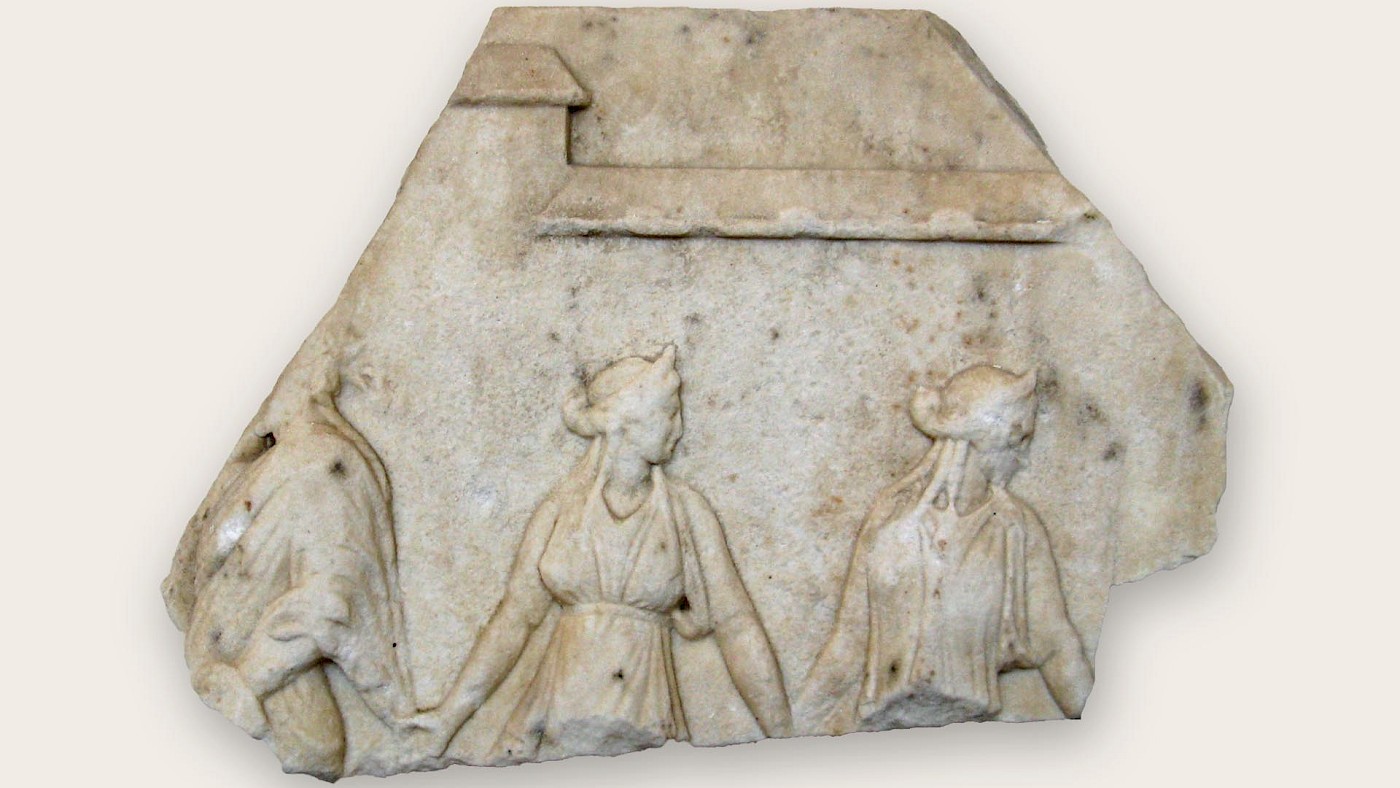Summer is almost here and that means that many of us are planning our holidays. A few years ago, I had a magical time on the Greek island of Rhodes and visited, among other things, its excellent archaeological museum. If you have the chance, it’s definitely worth a visit. One of the items on display there is the plaque (E605) at the top of this page.
The small panel to the left of this (marble?) plaque describes it as a “section of a votive relief with a representation of Hermes nymphopompos, leading the Nymphs in dance. An archaizing work of the first century BC.”
Lots to unpack
There’s a lot in that brief description that might be all but unintelligible if you haven’t been reading up on the ancient world.
First of all, what exactly is a “votive relief”? It’s a well-established joke in archaeological circles that whenever the purpose of an object isn’t immediately clear it’s interpreted as having to do with ritual or religion, but that’s not the case here. Votive plaques were dedicated at sanctuaries to fulfill some sort of vow (from the Latin ex voto suscepto, “from the vow made”), and it seems likely that this particular relief was dedicated at a temple or other holy place as a thank offering or out of devotion to a god.
The particular god in question is Hermes, the ancient Greek deity who served as a messenger to the gods, protected boundaries, trade, and thieves, and was also associated with some physical activities. In this particular case, he appears to lead nymphs in a dance, and is thus given the epithet nymphopompos, where pompos means “guide”. Similarly, he is sometimes portrayed as leading the shades of the deceased to the underworld as a psychopompos (from ancient Greek psyche, “soul”, and again pompos for “guide”). Dancing, like singing and even theatre, could and often did have a religious connotation in the ancient Greek world.
The relief itself dates to the first century BC, and thus belongs to what is referred to as the Hellenistic period of Greek history. Conventionally, the Hellenistic period begins with the death of Alexander the Great in 323 BC and lasts until the Roman era, and more specifically 31 BC. That’s the year in which Augustus fought and won the Battle of Actium against the combined Roman-Egyptian fleet of Marc Antony and Cleopatra. In truth, of course, one could argue that the Hellenistic era continued well after that and simply morphed into a broader Graeco-Roman art style that was heavily indebted to Classical and especially Hellenistic Greek art.
This particular relief is described as “archaizing”. In the Hellenistic period, artists had the advantage of being able to look back on centuries of ancient Greek art. That period also saw the rise of private art collectors, who each had different tastes as regards to their favourite styles of Greek art. For example, Augustus himself had a penchant for Classical Greek art, especially that of the age of Pericles (let’s say, the mid- to later fifth century BC), when anatomic features were moulded in a sort of soft fashion and facial expressions were usually blank and distant.
Whoever commissioned this particular relief wanted the style to be more similar to the earlier Archaic period of Greek art (for sculpture, especially the sixth century BC). The clothing in this relief is fairly simple, and not too different from reliefs of even the fifth century BC, but the most “Archaic” features are clearly the hair and the faces, as well as the overall frontal composition with little or no overlap. The hair is shown thick and somewhat abstracted; the faces are drawn in fairly bold strokes and even feature the so-called “Archaic smiles” so familiar from free-standing sculpture of the sixth century BC.
